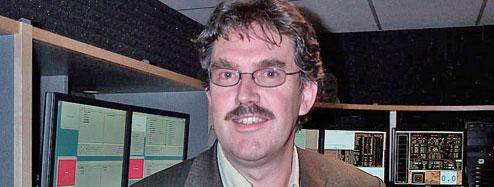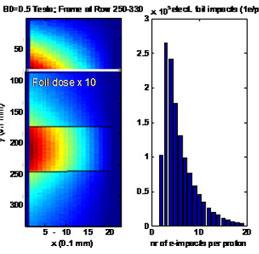
TRIUMF and PSI (Paul Scherrer Institute) — the Swiss research institute for natural and engineering sciences — share a long history of collaboration for the design, construction and exploitation of their large high intensity cyclotrons. The design concepts of the original machines were different; nevertheless many aspects involving both accelerators and their physics and applications were of common interest. This led to intense collaboration and the two institutes soon became “twin Laboratories.” The recent visit of Dr. Jacobus Maarten Schippers (for the entire month of August) strengthened the ties between PSI and TRIUMF.
At PSI, Dr. Schippers is responsible for the installation and operation of the new superconducting 250 MeV proton cyclotron and of the beam lines of the newly built proton therapy facility. So far, as a result of a successful program with proton beams from the original cyclotrons, a few thousand patients have been treated at PSI. Treatments include those for several types of tumours, like ocular melanoma, deep seated tumors — specifically chordomas and chondrosarcomas — and tumours in the head and neck region. Recently, treatments have been extended to children. The major benefit of protons compared to traditional X-rays is the strong reduction of irradiation dose in the healthy tissue surrounding the tumour. This allows the delivery of higher doses in the tumour and the treatment of tumours close to sensitive healthy organs.
PSI's new stand-alone facility, which started operating this year, will lead to significant progress in beam availability, crucial for the densely populated areas in and around Switzerland. This facility will also optimize the PSI beam scanning technique using a novel system that scans within seconds a narrow proton beam over the tumor in three dimensions. In Europe, the interest of the medical community for therapy with protons and even with carbon ions has significantly increased during the last few years. Several hospitals are now considering or building dedicated facilities.
At TRIUMF, ocular melanoma treatment has been performed since 1995. This motivated a great deal of interest in the seminar Dr. Schippers gave on this recent PSI progress.
While collaborating with the expert TRIUMF groups on the design of a new proton beam line connecting the 500 MeV cyclotron to a proposed ISAC target building extension, Dr. Schippers investigated a layout that could accommodate in one tunnel the beam from the cyclotron as well as the beam from a new electron accelerator being designed to enhance the availability of exotic ion beams for ISAC. At the same time, he focused on a problem with high intensity beam extraction from the 500 MeV TRIUMF cyclotron. Protons are extracted by “stripping” the electrons from the negatively charged hydrogen ions accelerated in the cyclotron. Because of the magnetic field, stripped electrons spiral around the extraction foil edge and deposit their energy mostly in the foil holding frame. The study will facilitate the design of a new holding frame to avoid excessive heating on the foil mechanism for high intensity multiple extraction for future experiments.
Finally, Dr. Schippers's visit also afforded an opportunity to discuss further exchanges with PSI, including exchanges between technologists from both laboratories.

Calculated heat poduction in the stripping foil (L)
and the number of hits (R).
